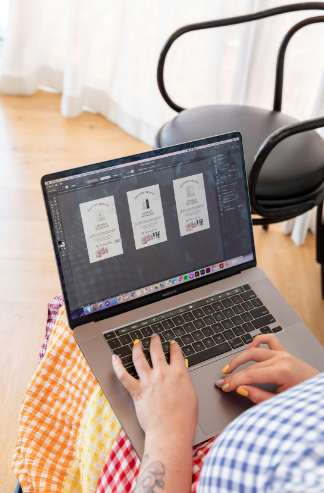Introduction
If you’re new to freelancing, figuring out what to charge can feel overwhelming. Should you set an hourly rate? Charge per project? And how do you make sure you’re not selling yourself short?
Let’s talk about it—with real stories, practical tips, and strategies to help you set rates that reflect your worth.
💬 What’s the biggest challenge you’ve faced when setting freelance prices? Drop your thoughts below!
1. The Pricing Struggle: A Real Freelancer Story
A few years ago, Ryan, a graphic designer, made a huge mistake when setting his freelance prices.
Eager to land his first few projects, he charged just $15 per logo design—thinking it would attract more clients. Instead, people doubted his skills, assuming low prices meant low quality.
After doing market research and revamping his pricing strategy, Ryan raised his rates to $250 per logo and positioned himself as a premium designer. The result? Better-paying clients who actually valued his work.
📌 Lesson: Low prices can make clients question your expertise. Instead of aiming for the cheapest rates, focus on quality and value.
💬 Have you ever set low rates and regretted it later? Tell your story!
2. How to Choose the Right Pricing Model
The way you structure your pricing depends on the type of work you do and how clients prefer to pay.
✅ Hourly Rate
Best for: Ongoing projects with flexible scope
✔️ Clear billing structure
✔️ Great for consulting and long-term work
❌ Limits earning potential if you work slow
💡 Example: A freelancer charging $50 per hour for social media management.
💬 Would you prefer hourly pricing, or does a fixed rate work better for you? Let’s discuss!
✅ Project-Based Pricing
Best for: One-time projects with clear deliverables
✔️ More predictable income
✔️ Clients know upfront costs
❌ Risk of undercharging if project scope expands
💡 Example: A web designer charging $1,500 per website design, regardless of time spent.
🎯 Challenge: If you were to set a project-based price, what would it be for your skills?
✅ Value-Based Pricing
Best for: Freelancers who deliver measurable business results
✔️ Focuses on impact rather than work hours
✔️ Higher earning potential
❌ Requires strong client relationships and proof of results
💡 Example: A copywriter charging $5,000 per sales page based on expected revenue increase.
💬 Have you ever tested value-based pricing? How did it work for you?
3. What Actually Affects Your Pricing?
Setting your rates isn’t just about guessing a number—it should be backed by solid reasoning.
Factors to Consider:
✅ Skill Level & Experience – More experience = higher rates
✅ Industry Standards – Research competitors in your field
✅ Cost of Living – Adjust based on your financial needs
✅ Project Complexity – Custom work = higher pay
✅ Client Budget – Target premium clients instead of bargain hunters
💬 What’s one factor that influences your pricing the most? Let’s exchange insights!
4. How to Raise Your Rates Without Losing Clients
Freelancers often fear increasing their rates, worrying they’ll scare away clients. But with the right approach, you can charge more while keeping your client base strong.
✅ Steps to Raise Your Rates Gracefully:
✔️ Improve Your Skills – Higher expertise = premium pricing
✔️ Showcase Client Success Stories – Let results speak for themselves
✔️ Communicate Your Value – Focus on results, not effort
✔️ Increase Gradually – Small, steady price jumps work best
✔️ Target High-Quality Clients – Not those looking for cheap labor
🎯 Mini Task: Write down a strategy you’ll use to justify raising your rates.
5. What to Say When Clients Ask for Discounts
Discount requests are tricky—you don’t want to lose a client, but you also shouldn’t undervalue your skills.
🔎 How to respond professionally:
“I appreciate your budget concerns! My rates reflect the quality and expertise I bring to the project. However, if needed, I can adjust the project scope to fit your budget while maintaining quality.”
💬 Have you ever negotiated prices with a client? What worked best for you?
Conclusion
Pricing is one of the most critical decisions you’ll make as a freelancer. By choosing the right model, understanding market rates, and confidently charging for your expertise, you can create a sustainable freelance career without selling yourself short.
💬 What’s your biggest pricing challenge right now? Let’s brainstorm solutions together!


